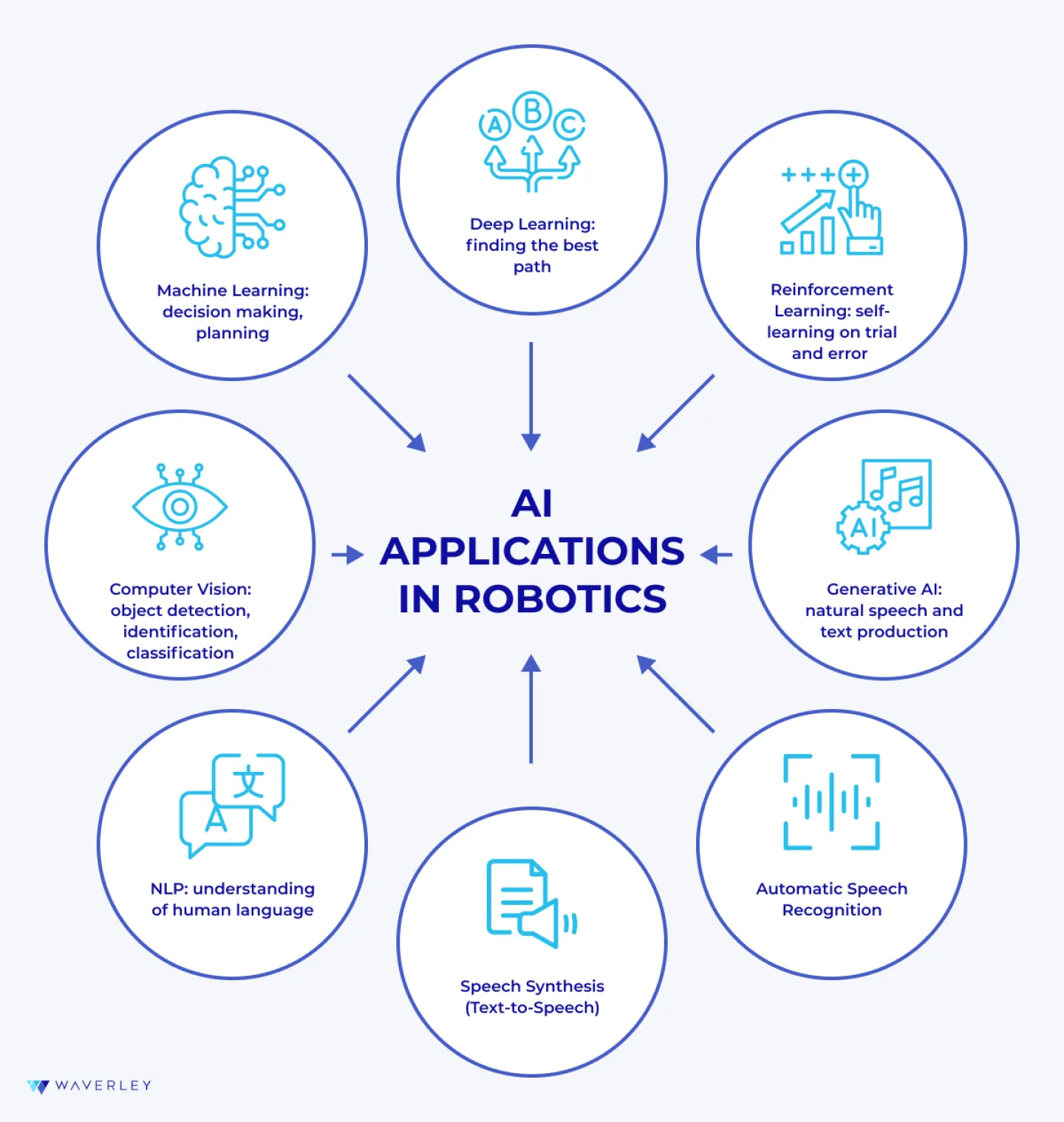What is Robotics in AI?
Definition
Robotics is a branch of artificial intelligence (AI) that focuses on the design, construction, operation, and use of robots. Robots are programmable machines capable of carrying out a series of actions autonomously or semi-autonomously. By integrating AI techniques, robotics enhances the ability of machines to perform tasks that typically require human intelligence, such as perception, reasoning, and learning from experience.

Where can you find AI Robotics models
This is the link to use to filter Hunggingface models for Robotics:
https://huggingface.co/models?pipeline_tag=robotics&sort=trending
Our favourite Model Authors:
The most interesting Robotics project
One of the most interesting Robotics projects is called RDT-1B.
RDT-1B is a 1B-parameter imitation learning Diffusion Transformer pre-trained on 1M+ multi-robot episodes. Given language instruction and RGB images of up to three views, RDT can predict the next 64 robot actions. RDT is compatible with almost all modern mobile manipulators, from single-arm to dual-arm, joint to EEF, position to velocity, and even wheeled locomotion.
All the code, pre-trained model weights, and data are licensed under the MIT license.
https://huggingface.co/robotics-diffusion-transformer/rdt-1bKey Characteristics of Robotics in AI
- Autonomy: Robots can operate independently without constant human intervention.
- Sensing: Robots use sensors to gather data from their environment, enabling them to make informed decisions.
- Mobility: Many robots are designed to navigate and interact with the physical world, requiring advanced locomotion capabilities.
- Adaptability: AI enhances a robot's ability to adapt to new environments and situations based on learned experiences.
- Collaboration: Robots can work alongside humans or other robots to accomplish complex tasks.
Examples of Robotics in AI
- Autonomous vehicles (e.g., self-driving cars)
- Industrial robots used in manufacturing and assembly lines
- Robotic vacuum cleaners (e.g., Roomba)
- Healthcare robots (e.g., surgical robots, robotic prosthetics)
- Service robots (e.g., customer service bots, delivery robots)
Applications of Robotics in AI
Robotics in AI has numerous applications across various fields. Below is a detailed explanation of key applications:
1. Industrial Automation
Robotics plays a significant role in manufacturing, where robots automate repetitive tasks, increase production efficiency, and improve safety. They can assemble products, package goods, and conduct quality control inspections.
2. Healthcare
In healthcare, robots assist in surgeries, manage patient care, and perform rehabilitation exercises. Surgical robots, such as the da Vinci Surgical System, provide surgeons with enhanced precision and control during operations.
3. Autonomous Vehicles
Self-driving cars utilize AI algorithms to process data from sensors and cameras, enabling them to navigate roads, avoid obstacles, and make real-time decisions. Companies like Tesla and Waymo are at the forefront of this technology.
4. Agriculture
Robotics in agriculture includes automated tractors, drones for crop monitoring, and harvesting robots. These machines increase efficiency, reduce labor costs, and improve yield predictions.
5. Exploration and Disaster Response
Robots are employed in hazardous environments, such as disaster zones, nuclear sites, and deep-sea exploration. They can perform search and rescue operations, collect data, and conduct repairs in situations unsafe for humans.
6. Service and Hospitality
Service robots are increasingly used in hospitality settings for tasks such as room service delivery, cleaning, and guest assistance. These robots enhance customer experience while reducing operational costs.
7. Education
Educational robots are designed to teach coding and robotics concepts to students. They facilitate hands-on learning experiences and foster problem-solving skills in a fun and engaging way.
Challenges in Robotics
Despite advancements in robotics, several challenges remain, including:
- Complexity: Designing robots capable of performing complex tasks in dynamic environments is a significant challenge.
- Safety: Ensuring robots operate safely alongside humans and in unpredictable environments is critical.
- Cost: Developing and deploying advanced robotic systems can be expensive, limiting their accessibility.
- Ethics: Ethical considerations regarding the use of robots in society, particularly in decision-making roles, need to be addressed.
- Regulation: Establishing regulations and standards for robotic technologies is essential to ensure safe and responsible use.
Future of Robotics in AI
The future of robotics in AI is promising, with advancements in machine learning, computer vision, and natural language processing driving innovation. The integration of AI will enhance the capabilities of robots, making them more intelligent and adaptable. Potential future developments include:
- Greater collaboration between humans and robots in various industries
- Increased use of drones for delivery and surveillance
- Enhanced capabilities for robotic surgery and patient care
- More advanced autonomous vehicles with improved navigation and safety features
- Robots equipped with social skills for better interaction with humans
Additional Resources
- Robotics Online
- IEEE Robotics and Automation Magazine
- Robots.com - Robotics News and Resources
- NIST Robotics Program
- Robot Operating System (ROS)
Conclusion
Robotics in AI represents a fascinating intersection of technology and human capability. As advancements continue, the potential for robots to enhance various aspects of life and work grows significantly. The integration of AI into robotics opens new avenues for efficiency, safety, and innovation across numerous industries. With ongoing research and development, the future of robotics promises to transform how we interact with machines and the world around us.
How to setup a Robotics LLM on Ubuntu Linux
If you are ready to setup your first Robotics system follow the instructions in our next page:
How to setup a Robotics system
Image sources
Figure 1: https://waverleysoftware.com/blog/ai-in-robotics/
More information
- What is Reinforcement Learning in AI
- What is Robotics in AI
- What is Graph Machine Learning in AI

